Dancing Club 3.0
Posted: December 11, 2019 Filed under: Uncategorized Leave a comment »
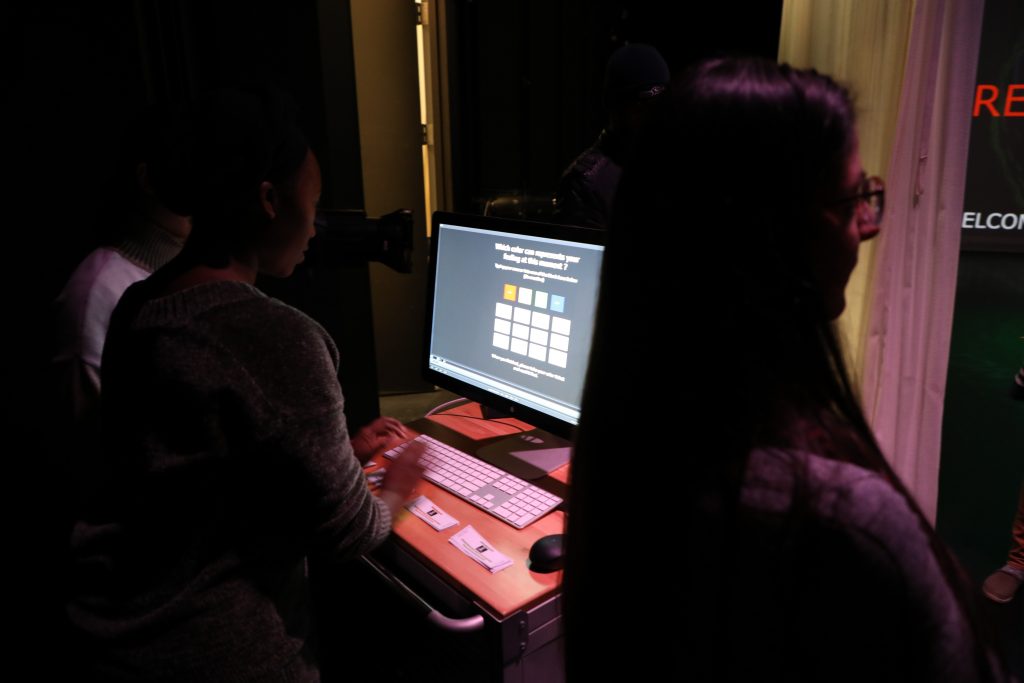
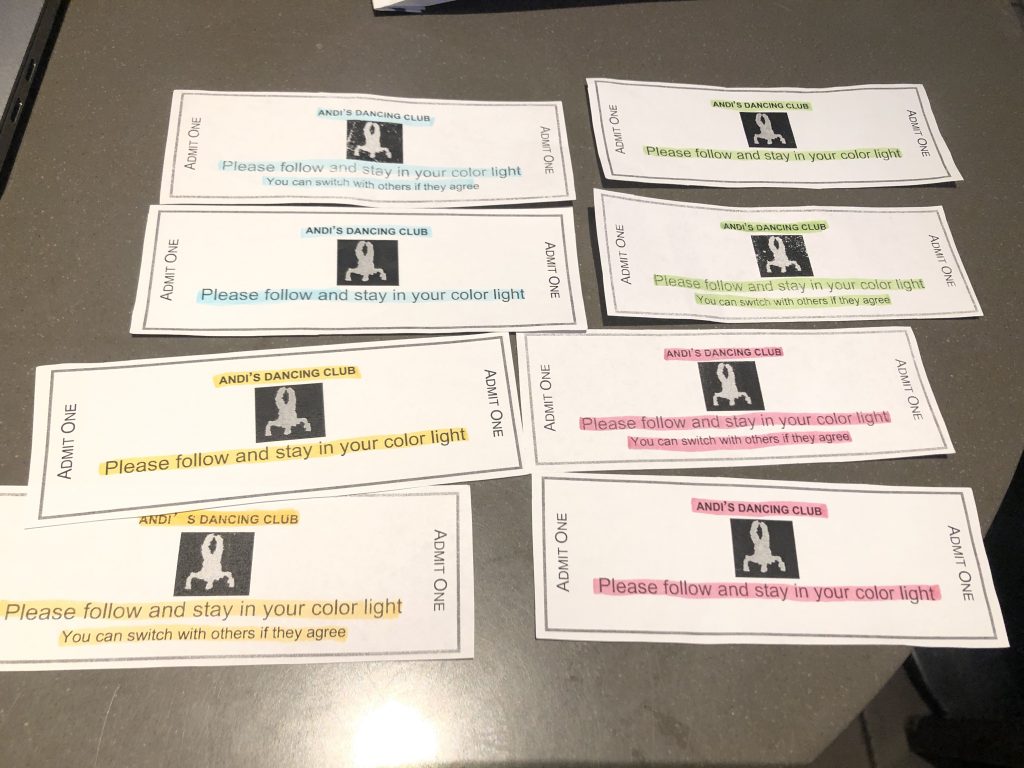

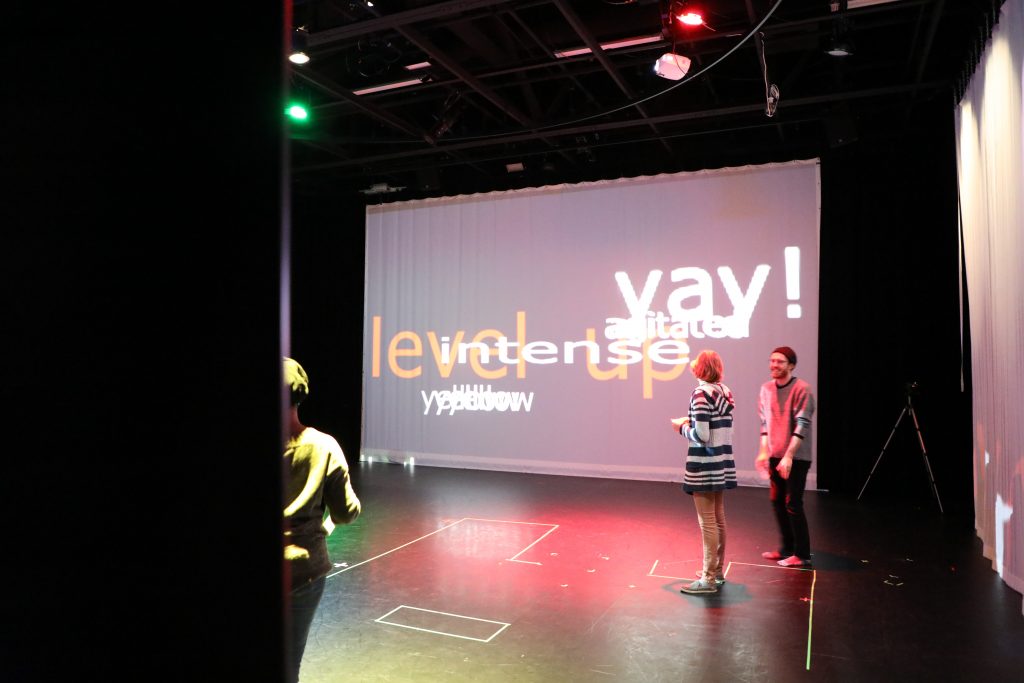


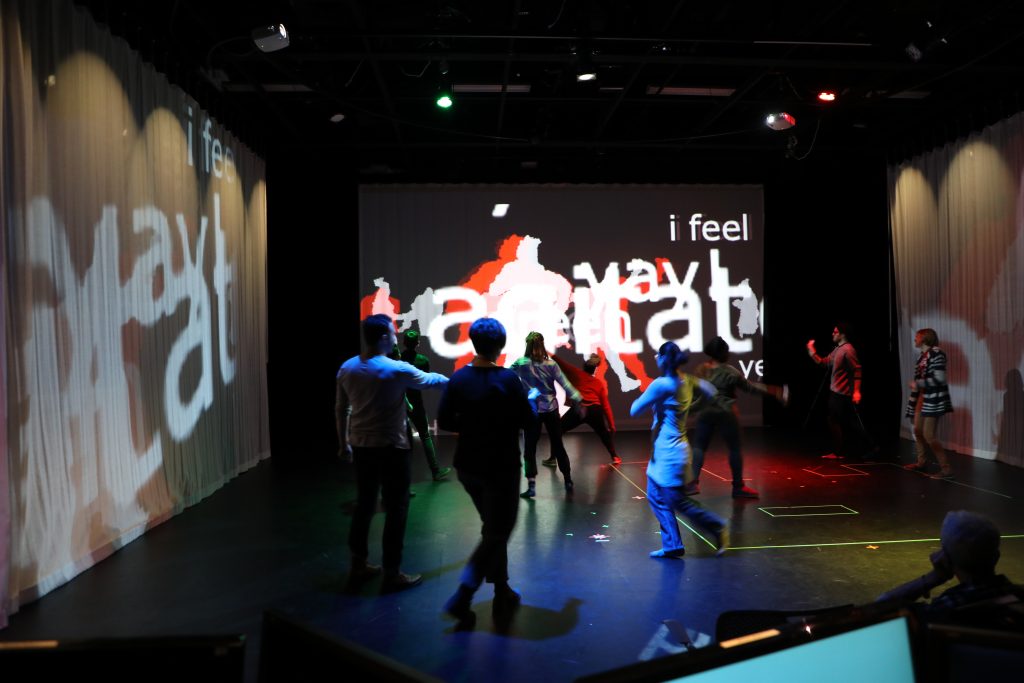
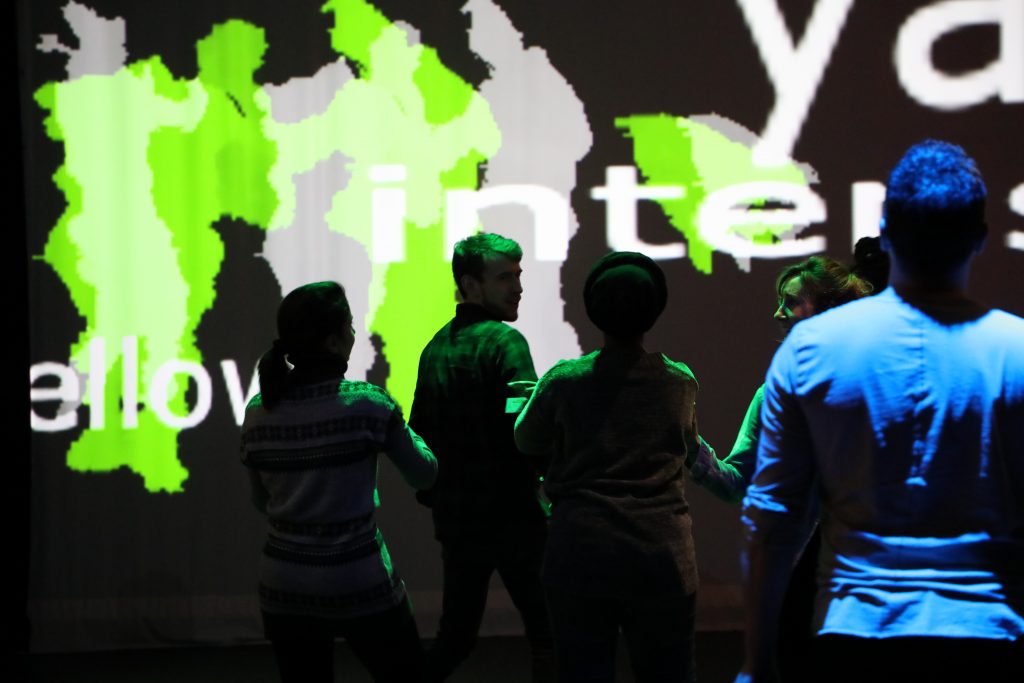

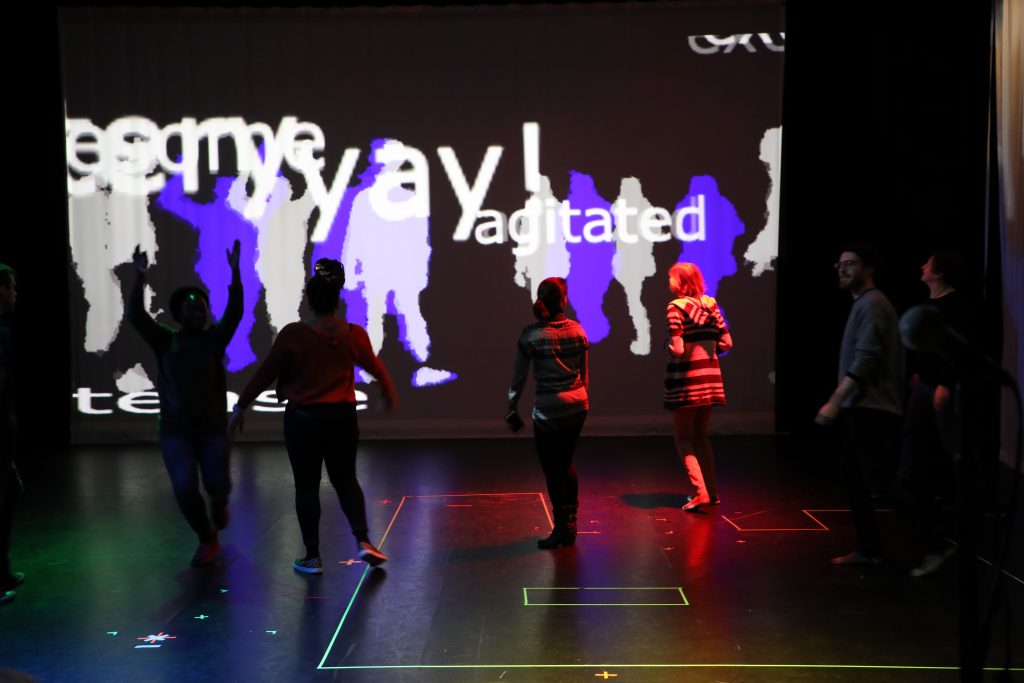
In this project, I explored the digital body and the actual body moving together.
Scene 1: People came into space and saw the introduction. (Audio & Video)
Scene 2: I used two sperate interfaces, which are the Box office and the DJ table. People went to the box office, answer the question, and got their ticket first, and then be permitted to go to the stage. I changed the question into which color can represent your feeling at this moment? People typed their answers, and the answers went to the screens immediately. While people were typing their answers, the screen jumped to scene 2, which was a dancer dance in the middle of a 3D music ball with the music “Alitina by the water.” I wanted people in this part could be more patient since they had to wait for all the people and then went into the next scene. So I choose a piece of soft piano music to erase the anxiety mood. It looks like people were patient. They either watching the dance or talking with the same color person.
Scene 3: I used a dark red instruction of “Level up” to let people aware that there was some change happening. But some people still not noticed that because the side screens were not clearly showing the warning. I had to tell them “Level up”.
Scene 4: this was the same thing in Dancing club1.0 and 2.0. Four different colors of dancers dance very fast. People dance with the dancers.
Scene 5: I changed the instruction into an individual scene that people could know quickly. It was successful, people noticed and read those instructions. And they prepared to dance or battle with others!
Scene 6: people danced to each other with music. I still did the lighting change at this part, but some people may forget about follow their light.
Thought: Audiences are uncontrollable! There always something happened, unexpectable! So I have to think more and prepare more form different angles and perspectives.
Dancing Club 2.0
Posted: December 11, 2019 Filed under: Uncategorized Leave a comment »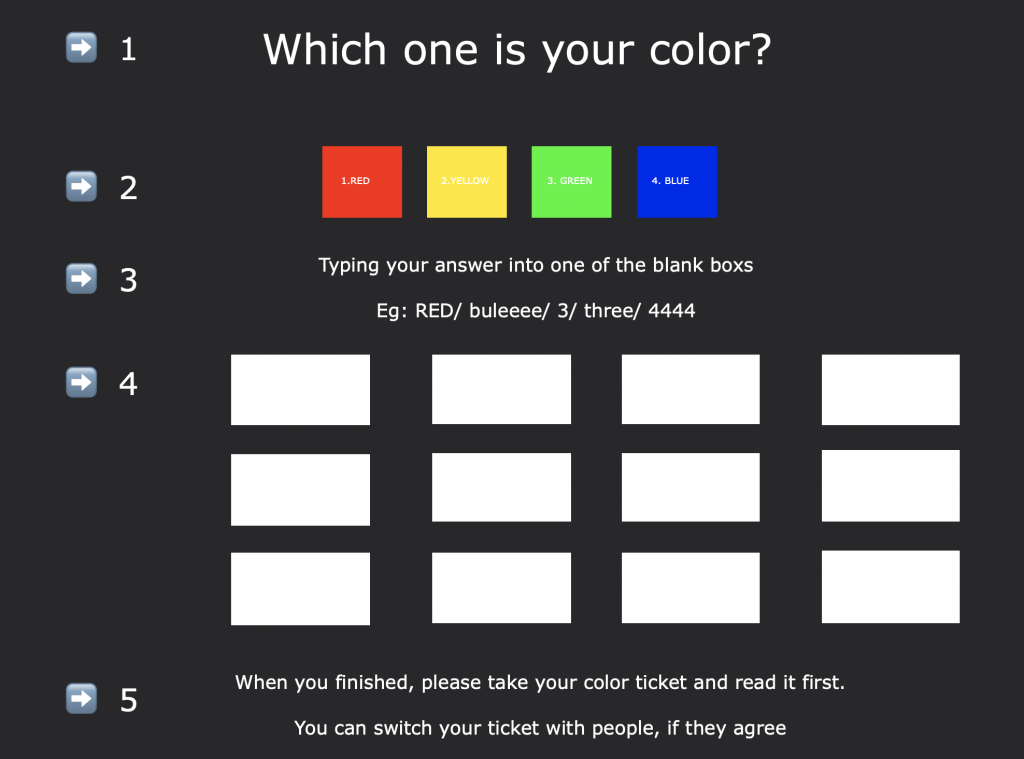


After cycle 1 performance, I added something on my cycle 2. It was basically the same structure as cycle 1. I tried to make each scene going smoothly into the next and made audiences better understand why the scene changed. I used some instructions on scene 2 (I recorded some dance through kinetic sensor and project to the screen) through which people could know the next part is to dance/battel with others. (picture 2) And the scene 3 was the kinetic sensor live recording the dance people did on stage. I also added some light cue on scene 3 (picture 3), so people had to move while recognizing the lighting change and follow their light! In this performance, we had some guest audiences, they gave me some valuable suggestions. They talked about the change between scene2 and scene 3 felt a little fast. Because I pressed the wrong button, the instruction didn’t go as I designed. After this performance, I thought I should make the whole thing more detail and specific, and to guide people step by step with more time so that they can understand better.
CYCLE 1: Dancing Club
Posted: November 18, 2019 Filed under: Uncategorized Leave a comment »In cycle 1, I did a “Dancing Club” through which the relationship of the digital body and the actual body was experienced. I hope people can put focuses on their bodies under this relax and casual club atmosphere.
There was an entrance for people who had the ticket to go into the Club. To get a ticket, people had to choose one color and type into the Isadora Interface.
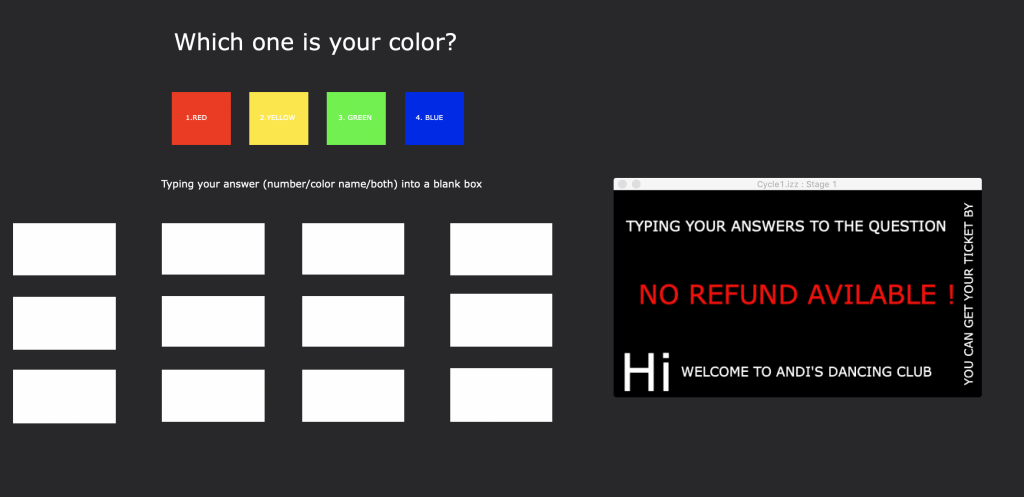
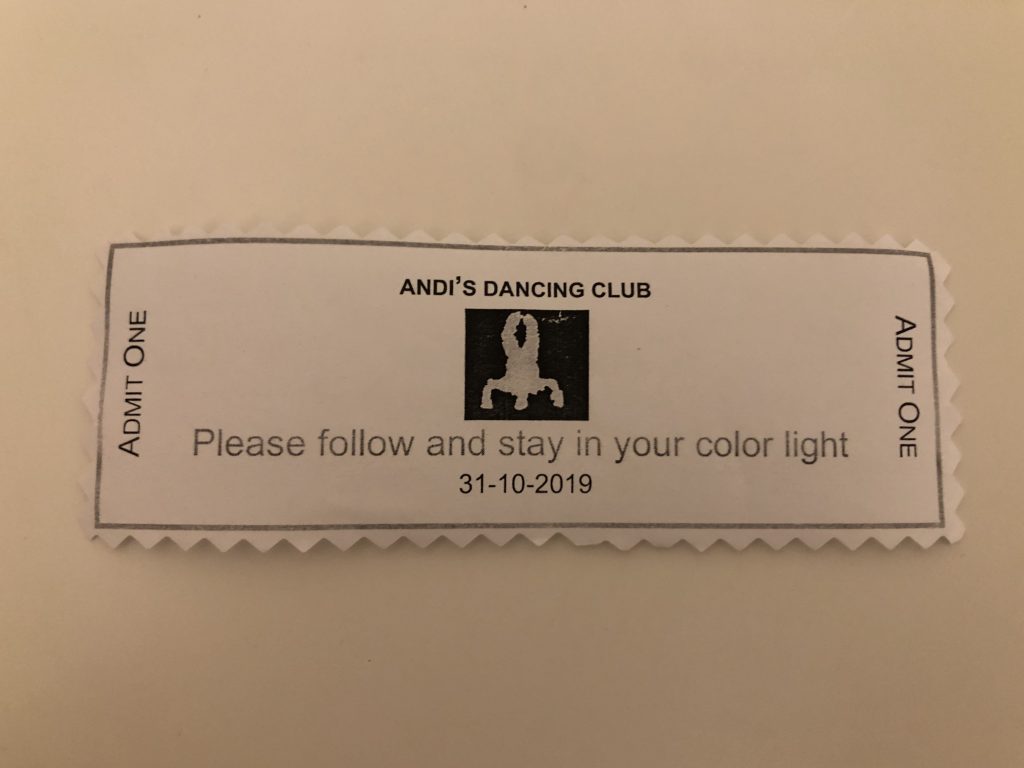
When people arrived at the club (Stage), the projector started to play the video that combined my Pressure Project1 and movement choreographed by me. I didn’t mean to let people learn these dance phrases, but they did.
As the instruction on the Ticket, people had to follow and stay in their color light. This means I “hired” and lighting designer manually control four light: Bule, Yellow, Red, and Green. When the light changed, people had to walk to the new spot.
With the music and video fade out, the last scene was people improvisation. I used Connect Sensor to capture people who dance in the stage and project them at the same time. They gradually recognized that it was themselves on the projection screen and started to play with it. And still, they had to take care of the change of their color light.
PP3 — composer
Posted: November 4, 2019 Filed under: Uncategorized Leave a comment »In my pressure project 3, I used Makey Makey as an intermedia to connect people and Isadora. My ideation for this project was to create some music keyboard that people could play randomly and compose their music work. I believe that the process of composition is a mystery. People have no idea about what kind of music they will produce until the end. I created an Isadora interface with the piano keyboard and three mystery buttons that were four background music, some funny human/robot/animal voices. And then, I did the same interface on that paper and connected it through Makey Makey to the Isadora. At first, I asked people to choose a color mark-pen that I had and to draw that paper. Which means they could control the color (button). Because Makey Makey works when people connect, I also asked them to touch each other without using hands. I thought that maybe fun. Then the journey started. I made instructions to guide people to play the piano at first. And then, the guideline introduced them to the other funny/weird buttons so they could explore mixing all the sound and music. People were enjoying playing it. They more tended to play based on background music rather than create something new. I feel this was because my instructions jump to fast so that they barely saw. And also, they feel weird in the part of touching because of the space limitation.
The Tortoise and Hare
Posted: September 26, 2019 Filed under: Uncategorized Leave a comment »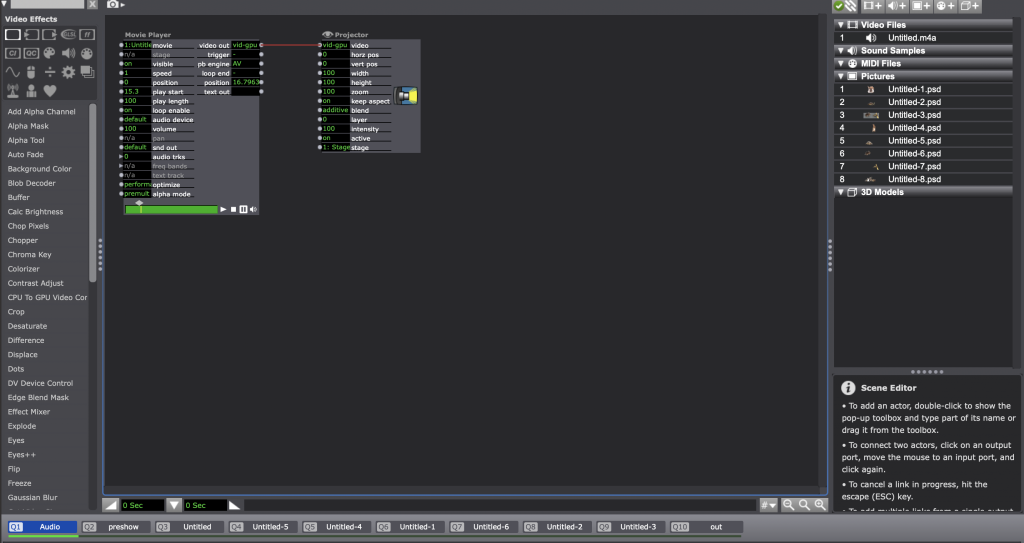
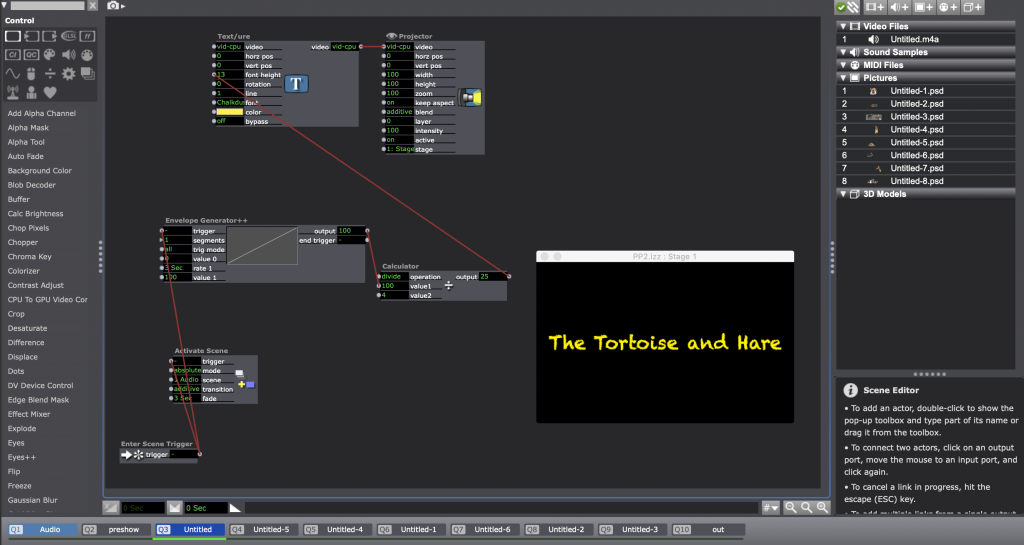
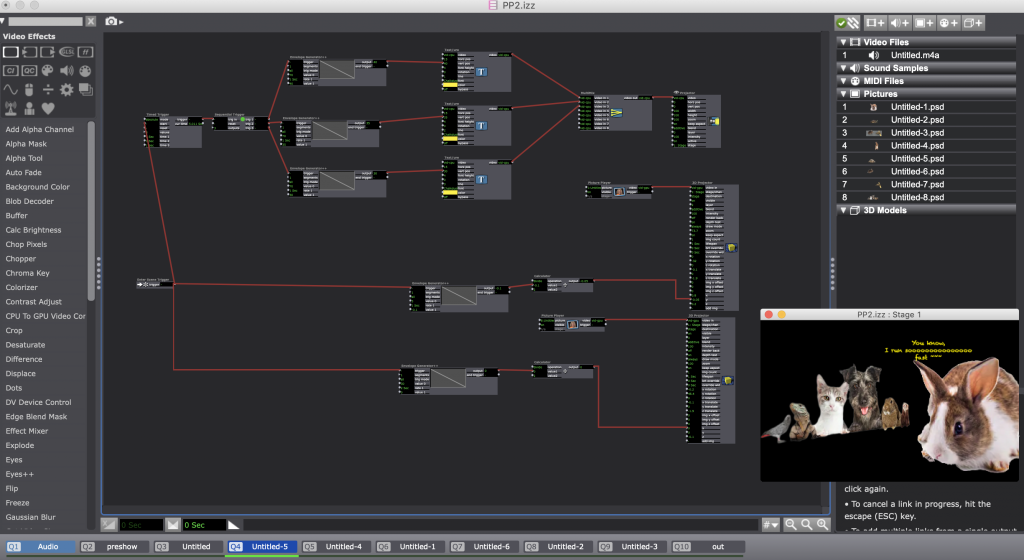
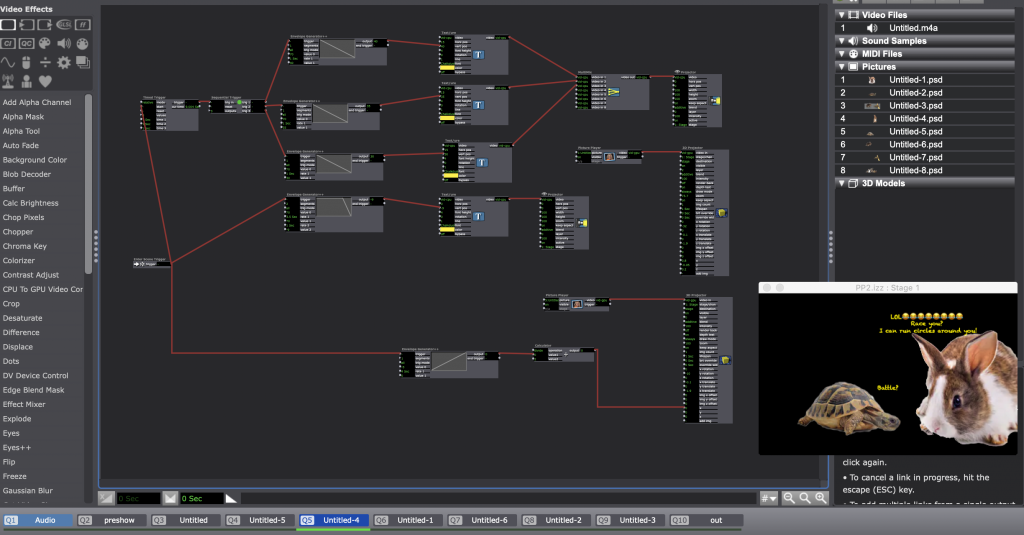
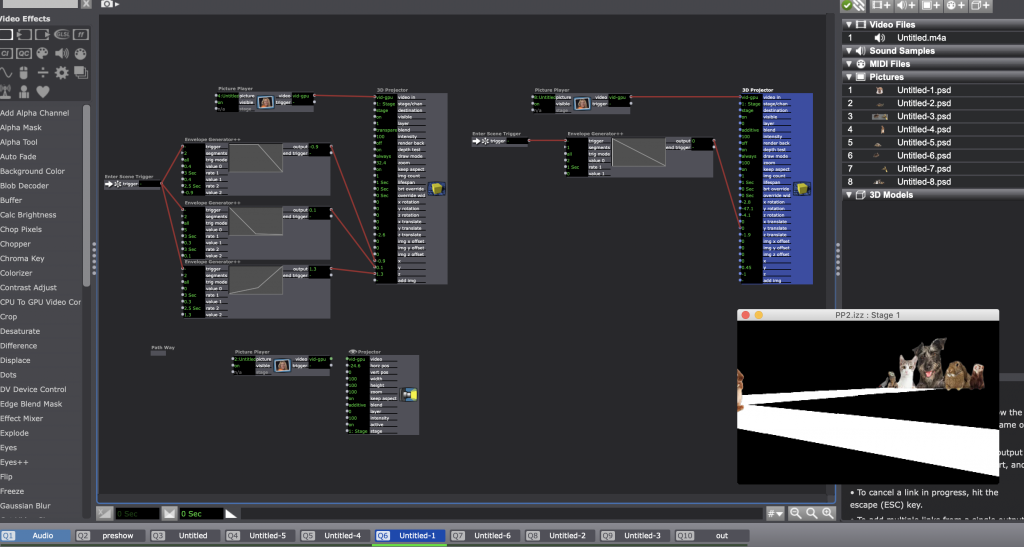
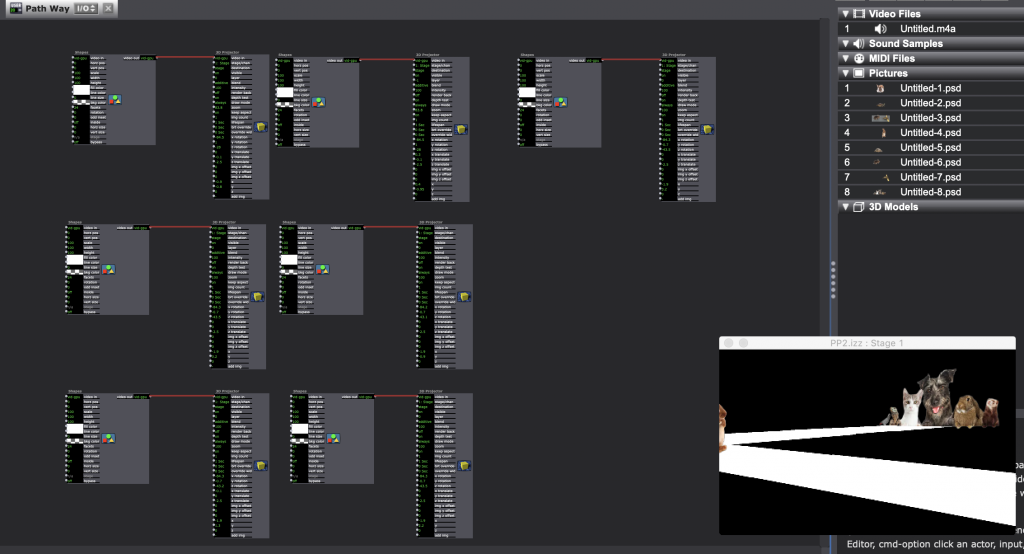

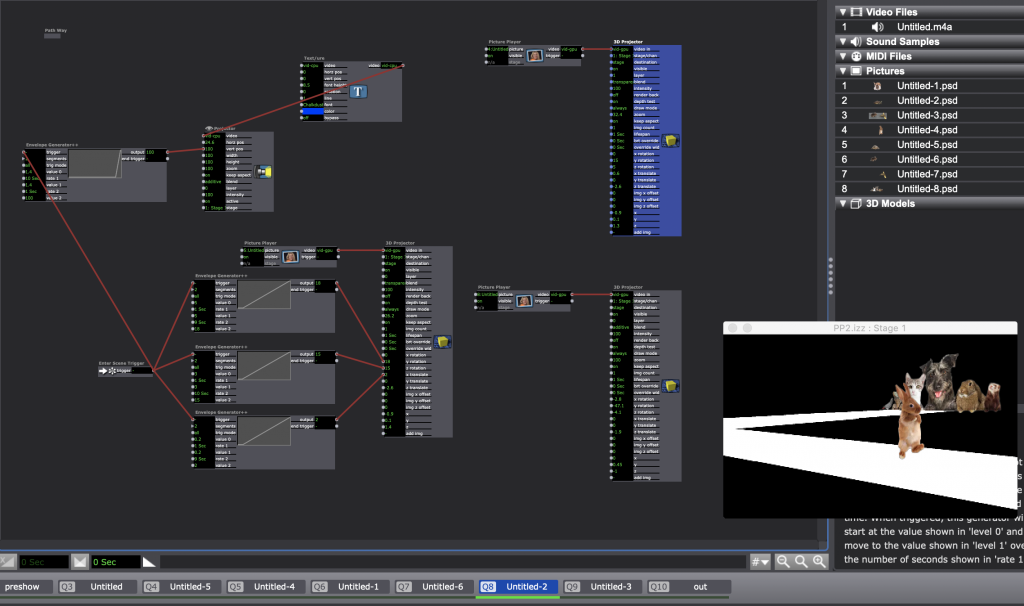
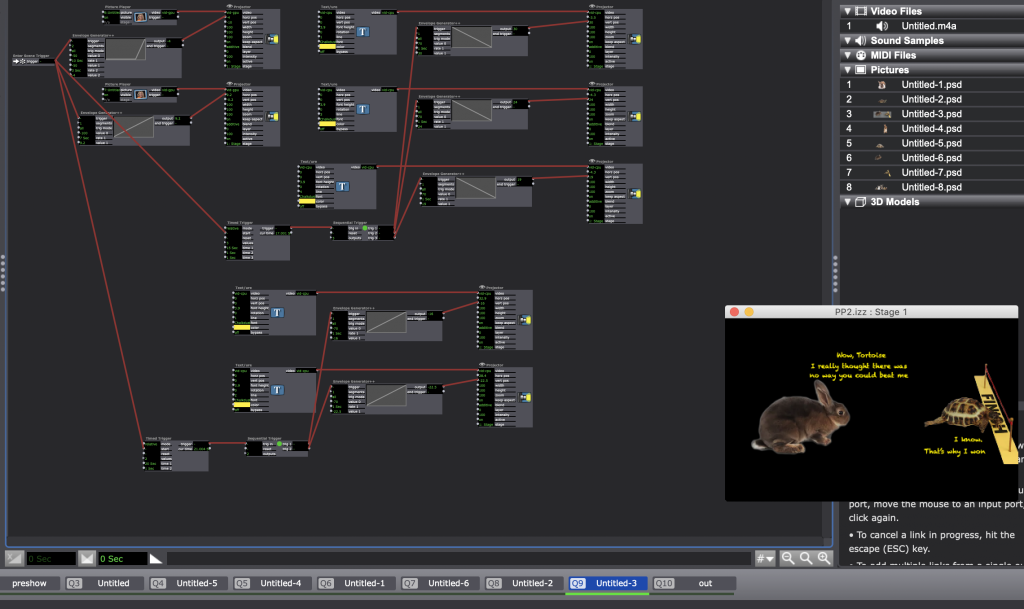
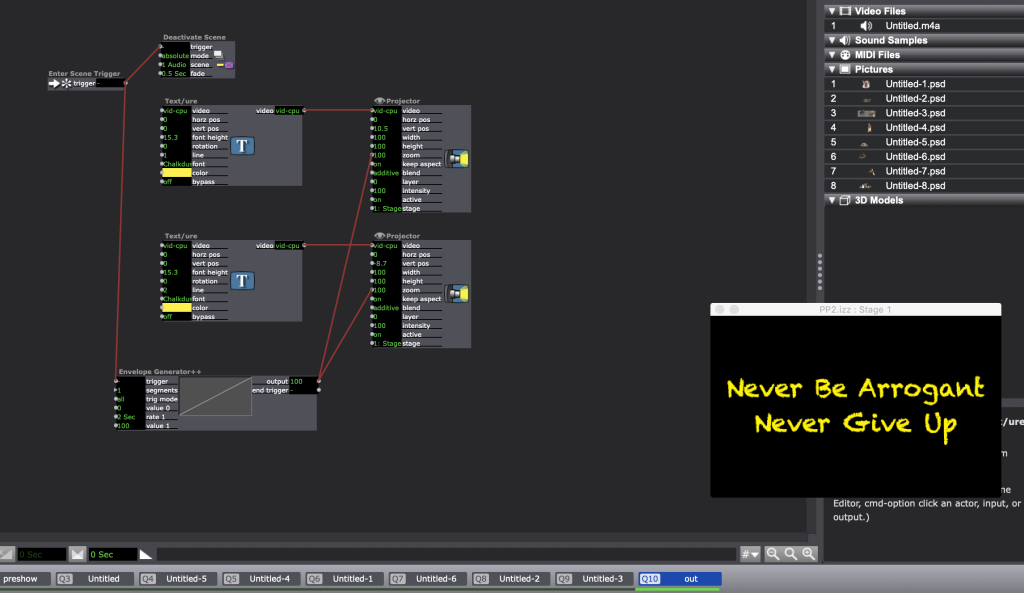
Requirements:
- Using sound/music tell a 1-minute story that has culture meaning
- we have 5 hours for this assignment
Ideation:
Before I started this project, I was thinking about what story has cultural meaning? After a while, I figured out that maybe the bedside story. Not only for myself but all the children, the bedside story accompanied us to grow up. Then, I asked my mother, “what story did you tell me when I was a kid”? She said 龟兔赛跑, which is The Tortoise and Hare.
Process:
I started to search for an English 1-minute audio source of this story. I found a video (link below) was excellent. It also inspired me to make some animation things by Isadora for this story. So, I recorded its sound and searched some pictures of tortoise and hare (Pictures are from Shutterstock, https://www.shutterstock.com/ , and Google image). I used the Photoshop image tool to cut out all the animals, tortoise and hare and then changed their white background to transparent. Then, put them to Isadora with 3D project. I made the raceway by using shape actors connecting to the 3D projector. I also wrote some lines that come from the story and some from myself.
Inspired by (video): https://www.youtube.com/watch?v=-HSdqyHDDHc
Reflection:
This project makes me think more about how powerful the audio and video could have. The sound and animation can exist independently and work well. But when they combine, the audience will have both visual and auditory senses. So, there are multiple perspectives for the audience. By bringing this bedside story into the adult audience (my classmates), I saw the reaction of them. Some of them laughed a lot while watching this story, and some of them felt thoughtful. I thought that the truth reflected in this simple bedside story is the most worth remembering in our lifetime.
PP1 Documantation — Andi
Posted: September 12, 2019 Filed under: Uncategorized Leave a comment »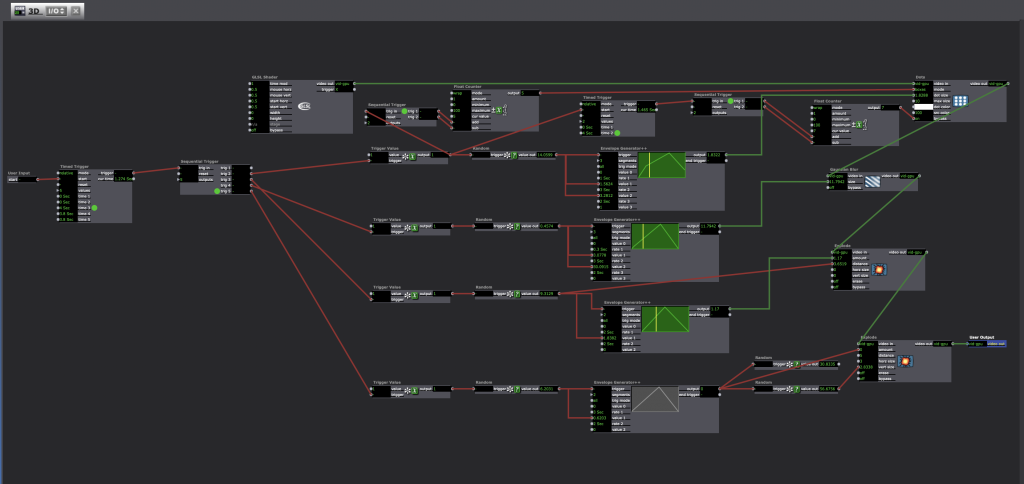
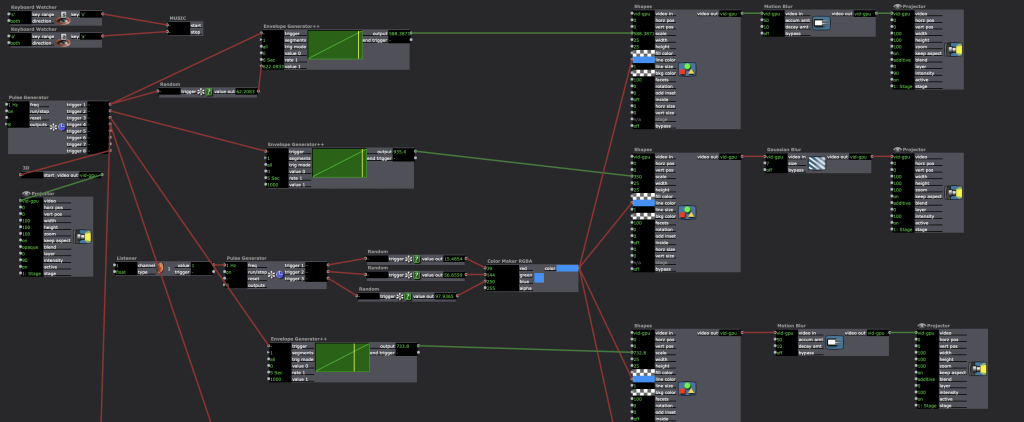
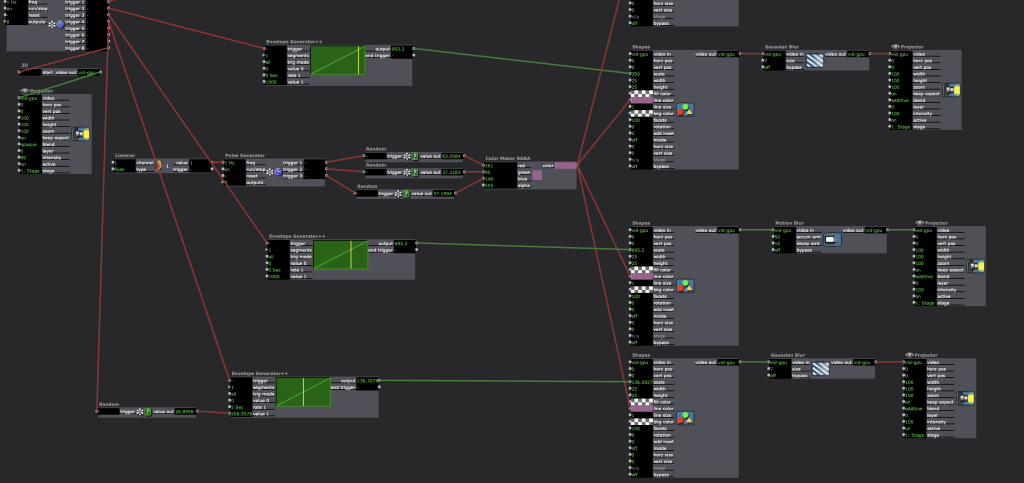
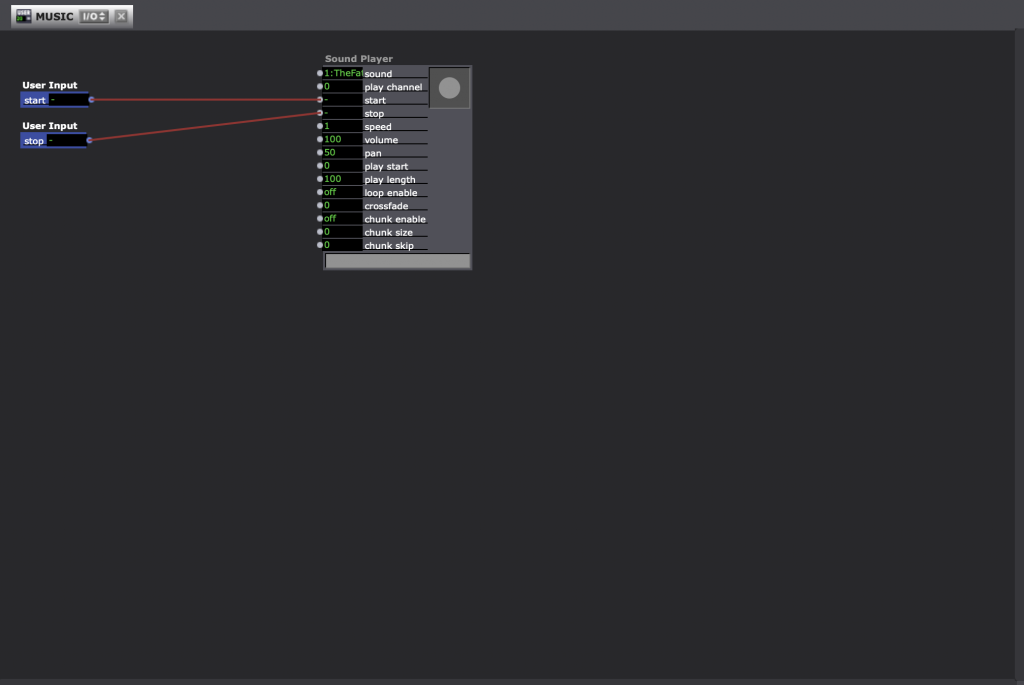
At the beginning when I was doing my pressure project, I just quickly looked through the “Shadertoy” website, wanted to find some 3D mode that is simple but colorful. And then I found the mode “Phase Ripple” by Tdhooper (https://www.shadertoy.com/view/ttjSR3). It made me felt the heartbeats. As you can see in my screenshot pictures, I added some effects like Dots, Gaussian Blur and two different explodes to this 3D model and use some random actors to control it in some way. After looked it several times, I felt it was a good way to combine the 3D model with 2D shape. So, I tried to add four circle shapes with two effects and changed the colors and scales of the shapes by random actors. In the end, I used keyboard watcher actor to play and stop the music. Through this exploring experience of Isadora, I have become more interested in using random actor. At the beginning of this creation, I always wanted to set up all the changes in a certain time, but because of the time limitation, I eventually chose to use random actor. Surprisingly, it gives me more surprises and unexpected effects than I thought before!